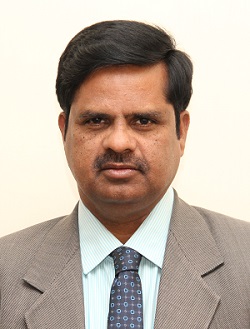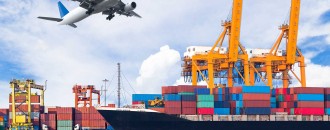
Is there hope for SAARC? Experts say yes
Sisir Pradhan | The Dollar Business
 Once the most open and freely journeyed region, South Asia’s borders today are barriers to trade, says Prof. V. Balakista Reddy, Coordinator, M.K. Nambyar SAARC Law Centre
Once the most open and freely journeyed region, South Asia’s borders today are barriers to trade, says Prof. V. Balakista Reddy, Coordinator, M.K. Nambyar SAARC Law CentreAlmost all the eight members of the South Asian Association for Regional Cooperation (SAARC) share a common heritage, history and geography. They also used to have in place a strong trade base centuries ago, but things have changed. Today, SAARC is perhaps the weakest block in the world both politically and economically. Constant disputes between India and Pakistan overshadow everything, including prosperity and growth of the region. Take a look at the figures. Intra-regional trade in SAARC, which stands at around $314 billion is much lower compared to around $10 trillion in APEC, and $330 billion in ASEAN. India constitutes almost 70% of the geographical area of the SAARC region, but India’s exports to other SAARC countries stand at a mere 5.5% of India’s total exports. The 18th SAARC summit held in Kathmandu last month took place after a gap of three years, but nothing much happened as the leaders pursued their own objectives. However, all hope is not lost. Dr. S.P. Sharma, Economist, PHD Chamber of Commerce, told The Dollar Business that progress has been made after the creation of SAARC in 1985 and a will to resolve political conflicts can help boost trade and prosperity in the region. Dr. Sharma says that the implementation of the South Asian Free Trade Area (SAFTA) has facilitated trade, especially for the land-locked countries. India’s exports to SAARC countries are growing at a rate of 33% per annum, and India stands to benefit if it invests in infrastructure and social investments in the region. Dr. Sharma says, “The significant push by new (Indian) government in infrastructure might be seen towards building stronger infrastructure in SAARC region. This will be done with an objective to make intra-trade more efficient within the region which will further benefit the land-locked nations of Nepal, Bhutan, Pakistan and Northern parts of India.” Dr. Sharma suggests that SAARC countries must simplify the ‘negative list’ mentioned in SAFTA to truly reap the benefit of the intra-regional trade. However, all this requires political will and leaders must resolve political conflicts to make trade more hassle-free in SAARC, he adds.
 Prof. V. Balakista Reddy, Professor of International Law, Coordinator, M.K. Nambyar SAARC Law Centre, and Registrar, NALSAR University of Law
Prof. V. Balakista Reddy, Professor of International Law, Coordinator, M.K. Nambyar SAARC Law Centre, and Registrar, NALSAR University of LawProf. V. Balakista Reddy, Professor of International Law, Coordinator, M.K. Nambyar SAARC Law Centre, and Registrar, NALSAR University of Law, agrees that SAARC can grow. He says “South Asia has made good progress in liberalising trade regimes and slashing tariffs since the early 1990s when most of the countries started with reforms,” he told The Dollar Business. Prof. Reddy adds that both the governments and the private sector recognise that strong exports are critical for overall economic growth and export-led growth has become a key thrust in each country. However, it is time for leaders to broaden their vision. He adds, “Trade among the SAARC nations have always been guided by political incentives. The conclusion of SAFTA in 1995 showed a new ray of hope, but non-inclusion of crucial trading areas like the service sector and inefficient dispute resolution mechanism under SAFTA has been one its biggest hindrances.” It cannot be denied that SAARC is the weakest economic block of the world and this is what the recently concluded SAARC Summit should have focused on because intra-regional trade in South Asia hovers at around just 5% of total exports from the region whereas it is 70% in the European Union (EU), he says. Prof. Reddy suggests that the first priority for SAARC countries should be economic integration. He says, “The issue is whether political differences — beyond vital national interests — can be set aside by each member country while a more harmonious environment is created through healthy economic cooperation,” he says.
This article was published on December 2, 2014.






 to success.
to success.